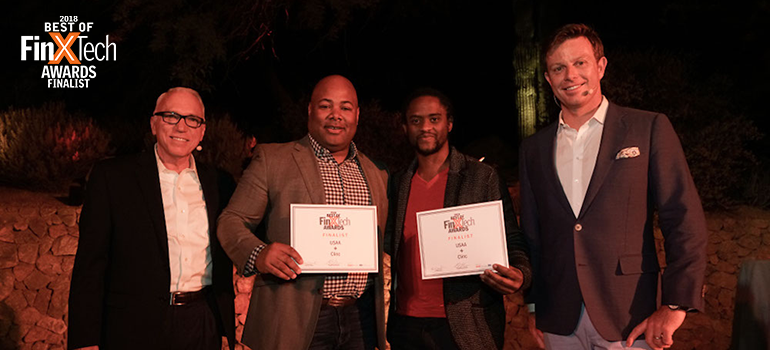
More Than Your Average AI
 USAA was looking for a financial technology firm to tell them they were dead wrong.
USAA was looking for a financial technology firm to tell them they were dead wrong.
They found that candid firm in the summer of 2017, and the resulting partnership has generated one of the first technologies the large financial services provider has rolled out that allows its members, active military personnel, veterans and their families, to interact with USAA on Amazon’s home devices that feature the digital assistant Alexa. USAA wanted to solve a problem: “How do we create a scalable conversation engine that can talk about something as sensitive as personal finances?” says Darrius Jones, assistant vice president for enterprise innovation at USAA, in describing what led them to their partner, Clinc.
Working together, Clinc, an Ann Arbor, Michigan based fintech that has grabbed the attention of national outlets like CNNMoney, and USAA developed a “scalable conversation engine,” as Jones describes it, that goes far beyond a binary question-answer interaction between a human and a “talking silo.” The two companies formally announced their partnership to create a conversational artificial intelligence solution in August 2017. USAA was the first major national bank to partner with Clinc, which had raised nearly $8 million in multiple funding rounds before the announcement.
“From the beginning, our teams worked together to create a very different experience for delivering content that is complex … and trending,” Jones says.
Those interactions propelled the work USAA and Clinc have done to be named in March as a finalist for Bank Director’s FinXTech Innovative Solution of the Year, an award presented at the FinXTech Annual Summit, held this year in Phoenix.
The truth is, several banks have worked with fintechs or internally developed some version of conversation capabilities with in-home devices like the Amazon Echo, Apple HomePod or Google Home. But most of these interactions are basic, limited to rudimentary questions about account balances and other simple, mostly binary, inquiries. But $155 billion asset USAA uses Clinc’s technology to offer broader conversations and analysis than just binary sort of answers. Jones calls it “three-dimensional” because of its ability to infer intent from interrogatory statements based on contextual evidence proposed in the interaction with its human counterpart.
“Our Alexa skill really has the ability to disseminate what you’re saying and, in some cases, answer a question most humans wouldn’t answer without proper context,” Jones says. So instead of just getting simple responses, the engine can analyze spending trends at specific places, for example, and aggregate data across several accounts, making the responses more holistic in nature. The technology can also be predictive at times when the user asks questions in a vague way, according to Jones, and can respond with a suggested prompt with a perceived answer, a capability that is so far rare in other similar AI interfaces.
USAA had wanted to wade into the AI and conversation engine area before signing on with Clinc, Jones says, and had developed a strategy they thought would have been effective, efficient and competitive, but then Clinc’s CEO, University of Michigan Professor Jason Mars, chimed in when they met at a conference. As Jones recalls, he told the team at USAA, “I think you guys have a great idea, but I think you’re doing it wrong.” It was exactly the assessment USAA was looking for. “We love partners who are willing to challenge us and make us better,” Jones says.
The conversational technology is still a ways off from administering payments or other products that might add to the bank’s bottom line, according to Jones. But USAA has already identified opportunities to leverage the technology to increase member loyalty, and potentially work in soft pitches for other products the bank offers and advise members of possible risks.
Jones says USAA has “really struggled with the success” of the pilot programs, so much so that they had to check and recheck the data and reporting to ensure it was accurate. Eventually, he says they hope to continue the scaling of the technology, which he expects to involve additional updates later this year.
“I have a belief that the days of typing or touching as your primary method of interaction are numbered,” Jones says.

